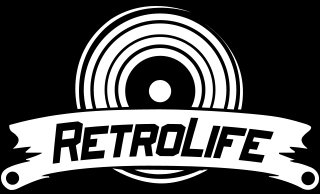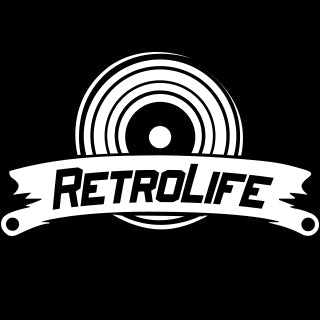A growing number of people are investing in the reborn industry of vinyl music. Whether it be the warm and textured sound or the tactile experience, vinyl is having quite the comeback and turntables are popping up in households around the world.
Some people may be content with some cheap all-in-one-solution for their turntable setup. Affordable all-in-ones typically do not have very good reputation as they have the tendency to ruin records from the amount of force that is applied to them by the stylus. We’re here to make things simple (and sound great) with our turntable setup guide for both passive and powered speakers.
First of all, you need to decide whether you are going to go with powered or passive speakers. Powered speakers have internal amplification, while passive speakers require external amplification.
All Retrolife turntable record players have an analog output and nearly all have an internal preamp, which allows the user to connect directly to powered speakers, or to passive speakers using an amplifier. Powered speakers are equipped with an internal power amplifier, their own power connection, and often a volume control. Passive speakers don’t include an amplifier and don’t have their own power source. In this case a stereo amplifier is required in between the turntable and the speakers to amplify the sound.
Most Retrolife turntable record players have a PHONO/LINE switch. The PHONO/LINE switch turns the turntable’s internal preamp off/on to provide the correct signal level for your turntable’s setup. It is important to understand when and why you would use each setting.
Line Level Output
When the turntable is set to LINE level, an internal preamp is being used. This allows the turntable to either plug directly into powered speakers.
Phono Level Output
When the turntable is set to PHONO level the internal preamp, if present, is bypassed. This means the output signal is low and an external preamp is required to bring the signal up to LINE level. When using powered speakers, this may take the form of a small box that sits inline between the turntable the speakers. These vary vastly in price and quality so it is important to do some research before buying as it will affect the audio quality.
Connector
Retrolife’s turntables either output on 3.5mm jack connector. A relevant cable is provided with each turntable. For some integrated record players with built-in speakers, you will need to purchase additional RCA cables to connect external audio devices.
How To Set Up Passive Speakers With a Turntable?
You will only need a few things to set up your passive speakers correctly with a turntable: a receiver, phono pre-amp, RCA cables and a pair of speakers. While there are more components to setting up passive speakers than powered speakers, the process really isn’t much more involved.
- Connect the turntable with the RCA cables to the preamp. (Some turntables require grounding.)
- Connect the pre-amp to the amp with RCA cables.
- Connect the amp to the speakers.
- Drop the needle and enjoy!
How To Set Up Powered Speakers With a Turntable?
Powered speakers are divided into Bluetooth speakers and wired speakers.
- Wired Speakers: borrowed directly into the RCA interface can be used;
- Wireless Bluetooth Speakers: you first need to know the Bluetooth version of the record player and find the speaker that matches the Bluetooth version of the record player. Generally, record players are automatically connected to Bluetooth after powering on, some record players may need to be tuned to the Bluetooth button to connect.
How to Set Up Headphones with a Turntable
Before connecting headphones to a turntable, it's important to consider whether the turntable has a built-in phono preamplifier. Turntables typically output a low-level signal that requires amplification before being sent to headphones. If the turntable lacks a preamp, you'll need an external headphone amplifier or a stereo receiver with a dedicated headphone output.
- Using a Dedicated Headphone Amplifier: If your turntable has a built-in phono preamp, you can connect a dedicated headphone amplifier directly to the turntable's output. This method provides precise control over headphone volume and sound quality.
- Connect the turntable's output to the headphone amplifier's input using RCA cables.
- Connect your headphones to the headphone amplifier's output jack.
- Adjust the headphone amplifier's volume to your desired level.
- Connecting to a Stereo Receiver with Headphone Output: If you own a stereo receiver with a dedicated headphone output, you can connect your headphones to the receiver's headphone jack. The receiver's built-in amplifier will power the headphones, and you can adjust the volume using the receiver's controls.
- Connect the turntable's output to the receiver's phono input using RCA cables.
- Plug your headphones into the receiver's headphone jack.
- Adjust the receiver's volume control to your preferred level.
- Wireless Bluetooth Connection: Some turntables offer Bluetooth connectivity, allowing you to pair wireless headphones. This method provides convenience and eliminates the need for additional cables. However, the sound quality may be slightly compromised compared to wired connections.
- Activate Bluetooth on both the turntable and your headphones.
- Initiate pairing mode on the turntable, following the manufacturer's instructions.
- Select the turntable from the list of available Bluetooth devices on your headphones.
- Once paired, audio from the turntable will be transmitted wirelessly to your headphones.
Turntable Setup And Configuration
Depending on what turntable you have, the amount of setup and configuration will depend on the specific turntable you select. Some turntables come set up straight out of the box while others involve a great deal of tweaking.
Regardless of the type of speakers or turntable you choose, a proper turntable setup is extremely important in delivering quality sound; however, it shouldn’t be considered a daunting challenge.
If you have any further issues connecting your turntable or have any follow-up questions, we invite you to contact us so that we can offer you further advice.


